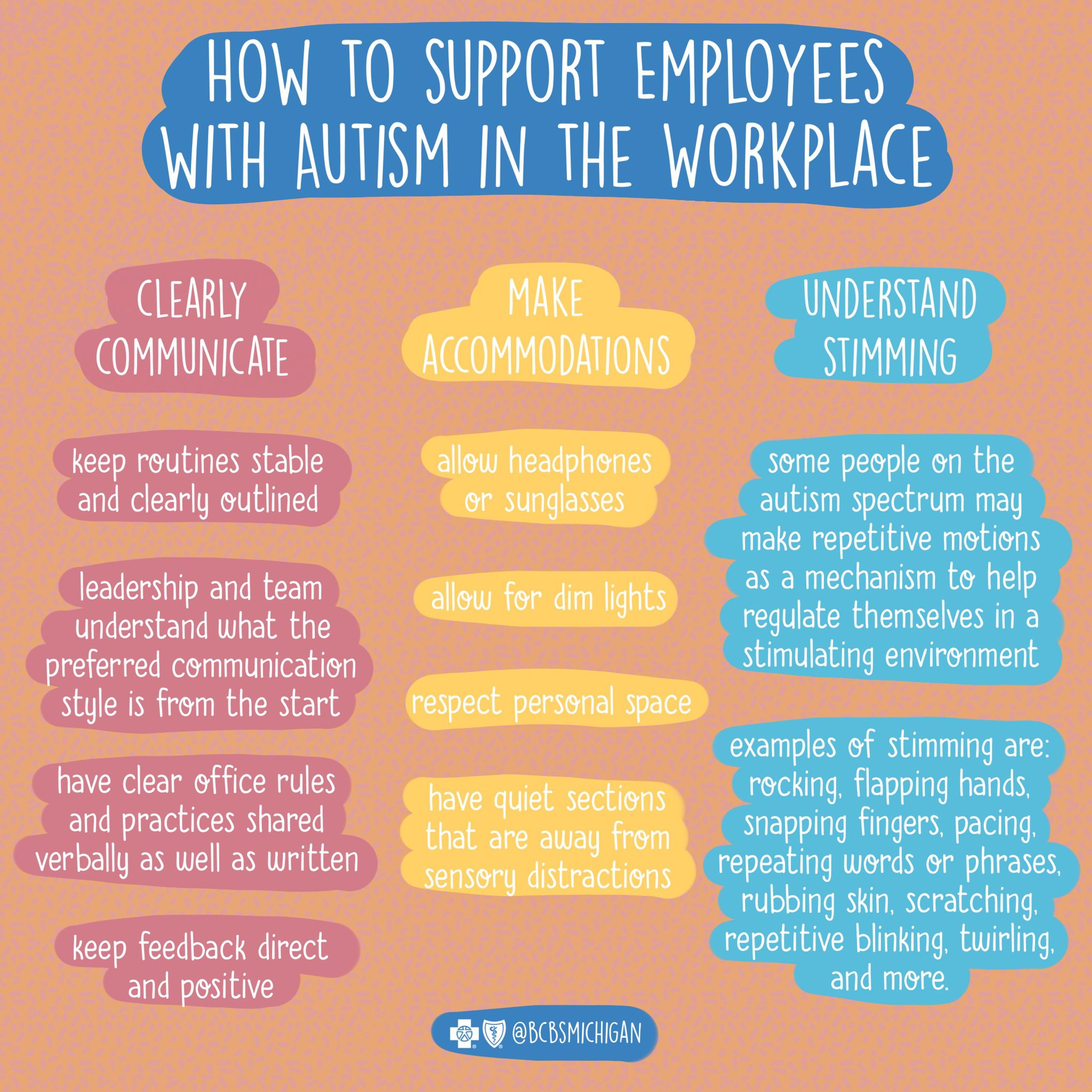
By focusing on a potential employee’s abilities – not their diagnosis – employers can help support people on the autism spectrum. Autism is a complex and broad condition in which an individual can face challenges with external stimulation, social skills, repetitive behaviors, speech and nonverbal communication.
What is autism?
Autism is a spectrum disorder, which means each person with autism has their own individual skills and challenges. While some individuals with autism need more support with daily activities, others are more independent. An estimated 2.21% of adults in the U.S. have autism. However, as many as 85% of adults with autism are unemployed or are underemployed. Additionally, nearly half of all 25-year-olds with autism have never held a paying job.
Research shows employment can help individuals with their independence reduce their autism symptoms and increase their daily skills. People with autism often have great attention to detail, are creative thinkers and are highly focused. They may have a harder time reading social cues or the “soft” skills of interacting with people. Here are some ways to make helpful accommodations at work for people with autism.

Clearly communicate
Keeping routines stable and clearly outlined is especially important for individuals with autism. When a new employee is onboarded, it’s important for leadership and the team to learn what their preferred communication style is. Some people on the spectrum may find it easier to learn with visual cues, so checklists with pictures or words can be good tools to employ, while others may prefer communication in writing.
Be clear about office rules and practices – both written and unwritten. If changes are coming to tasks or schedules, clearly communicate them in advance. Keeping feedback direct and positive is important to help employees with autism process how they’re doing. There are times when social cues or softer hints may not be as effective as they would be for an individual who is not on the spectrum.
Adults with autism are more likely than non-autistic adults to have anxiety, particularly related to social and communication differences. Taking the time to communicate clearly, ask employees what they need and answer questions can help autistic adults feel more comfortable and more productive.
Make accommodations
Many people with autism are highly sensitive to sound, touch, light and scent. Work environments can be full of sensory distractions that can be overwhelming for individuals with autism to process, including bright lights, ringing telephones, conversations, machine sounds, fragrances and cologne from coworkers.
There are small accommodations employers can make to help individuals with autism in the workplace. Allowing employees to work with headphones or sunglasses or in a quiet section of the workplace are all small ways to enable productivity and focus. Dimming lights and respecting their personal space are additional ways to help employees with autism.
Managers can ask employees with autism what they need in order to be successful at their jobs.
Understand stimming
Some people on the autism spectrum may make repetitive motions, like rocking, as a mechanism to help them regulate themselves in a stimulating environment. In the autism community, this is known as “stimming.” It’s important to help other employees understand the role these motions play for the individual with autism.
Employers may find it useful to connect with outside support services to help fully integrate employees with autism into the workplace. Vocational services can assist with placement and onboarding, as well as on-site coaching.
Photo credit: Getty Images
Related:






